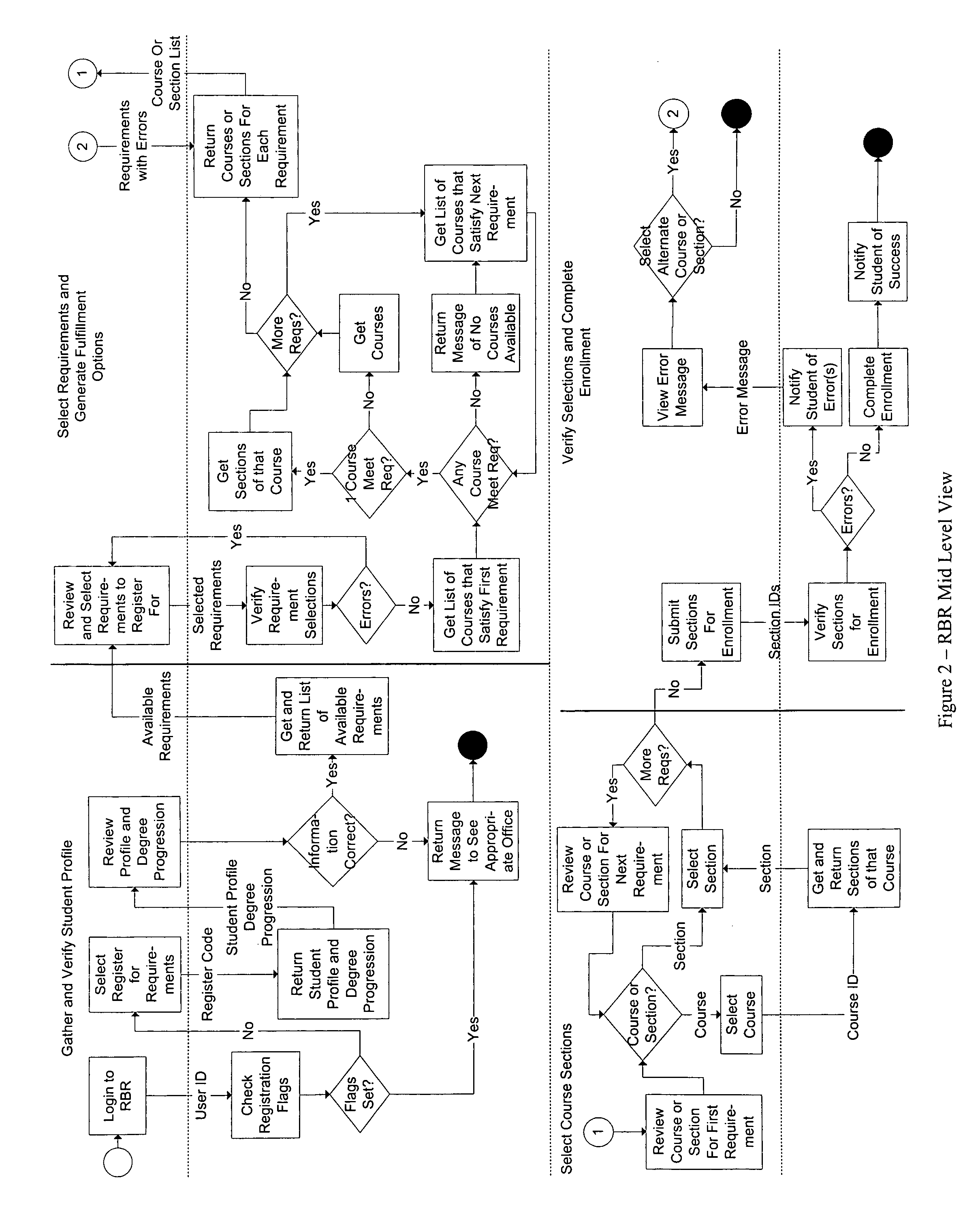Requirements based registration system
a registration system and requirements technology, applied in the field of higher education, can solve the problems of affecting the graduation rate of students, the average time it takes for students to register, and the inability to meet the requirements of the requirements, so as to reduce the average time it takes for students
- Summary
- Abstract
- Description
- Claims
- Application Information
AI Technical Summary
Benefits of technology
Problems solved by technology
Method used
Image
Examples
Embodiment Construction
[0061] Requirement-Based Registration (RBR) is a “systems” innovation, which guarantees that all courses students enroll in will be used toward the successful completion of their designated degree program. RBR is able to provide this guarantee by not allowing students to register directly for any course, e.g., PHIL (philosophy) 101. Students must first specify the degree requirement that they are attempting to fulfill (e.g.—social science, 2nd natural science, etc). Once the student specifies the degree requirement, RBR restricts registration to only those courses that will in fact meet the requirement.
[0062] RBR effectively performs degree audit at the point of registration, based on each student's individual record. A student's record comprises 1) an administrative flag, 2) profile, 3) a special review flag, and 4) degree progression parameters. The administrative flag is enabled if the student has been admitted for the term and the student is not on academic, financial, or judic...
PUM
 Login to View More
Login to View More Abstract
Description
Claims
Application Information
 Login to View More
Login to View More - Generate Ideas
- Intellectual Property
- Life Sciences
- Materials
- Tech Scout
- Unparalleled Data Quality
- Higher Quality Content
- 60% Fewer Hallucinations
Browse by: Latest US Patents, China's latest patents, Technical Efficacy Thesaurus, Application Domain, Technology Topic, Popular Technical Reports.
© 2025 PatSnap. All rights reserved.Legal|Privacy policy|Modern Slavery Act Transparency Statement|Sitemap|About US| Contact US: help@patsnap.com



